For instance, if the soil is more conductive, then you need a low-frequency detector with a small coil. Contrarily, if the soil is less conductive, then you need a high-frequency detector with a large coil. Similarly, metal detectors come with different operating modes and other features to help you focus on your target metal. Before you choose a detector, below are the primary features that you need to look for,
Coil Size: You need to use search coils of different sizes for different ground conditions. It will take a lot of time to search the entire ground using a small coil. On the other hand, when you use a large coil in a mineral-rich area, there will be distortion. So, you will have to change the search coils accordingly. Operating Frequency: Operating frequency is the number of signals a metal detector sends and receives in a second. If the operating frequency is low, the signals penetrate deep into the ground and detect metals. Contrarily, high-frequency detectors do not penetrate deep. Operating Mode: The metal detectors come with 3 to 7 operating modes, in addition to a standard all-metal mode. You can either choose to hunt all metals or focus only on specific metals.
Now first things first, let us go on and review some of the Best Metal Detectors to buy online.
9 Best Metal Detectors
Best Metal Detectors 2023 Reviews
1. Garrett Metal Detector
First on our list is the Garret ACE 300, an advanced-level metal detector. It is ideal for detecting coins, jewelry, electronic pinpointing and pulse width modulation. In ideal conditions, it can detect metals up to 8 inches deep. However, the soil composition can affect the penetration. It has a submersible search coil. Apart from this, it comes with three free accessories. They are volume control headphones, ACE environmental cover-up and 7” x 10” search coil cover. The metal detector comes in 5 different modes. They are jewelry, coins, relics, custom, and zero discrimination. Each mode eliminates other metals and detects only the chosen metal. Furthermore, it has a built-in pinpoint mode so that you can zoom in on the target metal. Top Features:
Submersible search coil that is waterproof and is great for saltwater beaches Designed for advanced and also beginners as well Employs Pulse Width Modulation of detecting metals with electronic pinpointing Five search modes available and can be toggled on the screen The screen also has coin depth indicator, digital target ID, and depth adjustment toggling Eight sensitivity settings available Perfect for coins, jewelry and micro-target detection ACE Environmental set up Comes with 3 freebie accessories Volume control ClearSound Easy Stow Headphones by Garrett Search Coil cover (7 inches x 10 inches) Metal detector coverup (ACE environmental
Warranty: Comes with a 2 years manufacturer’s warranty from the date of purchase Pros:
Frequency adjustment available Easy to use for beginners and also for advanced users Enhanced Iron resolution Digital target ID Iconic freebies
Cons:
There is no Iron audio Cannot adjust the ground balance settings
2. MINELAB Equinox 800 Metal Detector
The Equinox 800 metal detector is from a famous brand called MINELAB which is known for providing reliable and the best products. If you are looking for a metal detector that is capable of hunting in all types of terrains, types and even under water, then this model is the right choice. It features multi-IQ simultaneous multi-frequency technology and 8 custom search profiles which ensure limitless exploration. As this metal detector is water-proof, you can use it detect under the surface of rivers, streams, lakes and oceans up to 3 meters or 10 feet. It comes with 4 detect modes that include gold, field, park and beach modes. It comes with accurate target ID table which lets you confidently sort through the trash and find the treasure. Top Features:
It comes with LCD display which showcases different features like range, target ID and others. Is capable of detecting within 10 feet range Being waterproof, it can detect easily under the water as well. Has 8 custom profiles and 2 favourite settings. This metal detector comes with 4 detect modes.
Warranty – Not provided Pros
Waterproof Multi-IQ technology Accurate target ID
Cons:
Warranty details not specified
3. Bounty Hunter Metal Detector
Bounty Hunter is known for its wide range of metal detectors from basic kid-friendly to professional detectors. The Bounty Hunter is a professional metal detector of high frequency. The metal detector has 3 operating modes. In the all-metal mode, you can detect all metals. In the discrimination mode, you can eliminate the trash metals. When you select the 2-tone audio mode, the detector emits different tones for different metals. It uses a disc control that differentiates between the target metals and trash metals. It has a robust design that allows you to detect metals even in harsh ground conditions. Bounty Hunter TK4 Tracker IV has an 8-inch waterproof search coil with an adjustable stem. It can detect small size metals up to 6 inches deep and larger size metals up to 2 feet deep. It has a simple knob control interface to change between the modes Top Features:
Comes with 3 different modes All-metal mode Discrimination mode and 2 tone audio mode Can even detect objects up t0 3 feet of distance and 6 inches deep (mostly for coin-sized objects) Neutral response ground balance preset for mineral content in the target ground Differentiate between unwanted metal and the actual target with its notch and disc controls The device has a 6.6 kHz operating frequency The Search coil is 8-Inch and Waterproof in nature Has a 1/4 inches big Headphone Jack for audio output Has a built-in speaker too for audio feedback output Display with signal and target strength meter analogue screen Sensitivity control
Warranty: Massive 5 years manufacturer’s warranty from the date of purchase. Pros:
Rugged metal detector build quality Great automatic ground balancing Easy to use Massive warranty
Cons:
No digital display Not a lot of freebies provided (with detector only option)
4. RM RICOMAX Metal Detector
The RM Ricomax metal detector offers a lot of advanced features, which are suitable for both beginners and advanced users. The adjustable stem (33 – 40.6 inches in height) makes this detector convenient for adults and kids as well. With its 10-inch search coil, the metal detector can detect metals accurately up to 8 inches deep. Using the all-metal mode of this dial treasure hunter, you can easily detect metals like silver, gold, iron, aluminum, bronze, copper, coins, and others. Its P/P pinpoint function will make you locate the exact target accurately. Its two-mode (disc/tone) easy detection will enhance your detection and help you to find out the exact metals. With its disc mode, you can eliminate other metals and focus only on your desired metals. While tone mode motion all metals yet distinguish audio tones (high or low for each metal. Also, you will get a 3.5mm headphone jack with this battery-powered treasure hunter/metal detector to search the treasury even in a noisy area. The information about the sensitivity level, operating mode, battery status, volume level toggling, and depth of the target is clearly on the LCD display of the control box. Furthermore, the coil and stem have a waterproof feature yet not the control box, which let you detect the metals anywhere, including in shallow water. Top Features:
The metal detector comes with a 10-inch large search coil that detects elements dug deep up to 8 inches in the deep target range. Pinpoint audio tone prompt functions with distinctive audio feedback signals for different types of metals and target ranges. Intuitive, detailed, and professional set LCD screen control box, in which allow you to control the parameters on the box and thereby provide a highly accurate information display. Highly sensitive and effective in detecting and also in discriminating between valuable and junk metals with its 6.5kHz high working frequency. The pinpoint function can be enabled for accurate target detection. Detailed instructions are present in the operation manual. Switch between 4 different modes and 10 sensitivity adjustment levels for different targets The coil and the stem are waterproof in nature which let you use them in wet environments as well. Suitable option to use for all age groups and has a 3.5mm headphone audio phone jack to it.
Warranty: RM RICOMAX provides a lifetime warranty on all its metal detector products and this may be subject to terms and conditions. Pros:
Large, highly efficient, and waterproof coil Simple and easy to use Intuitive LCD screen control box Four detection modes and 10 sensitivity adjustment levels.
Cons:
None specific to mention.
5. National Geographic Metal Detector
The National Geographic Junior Metal Detector is specifically for the kids. It is lightweight and has a 7.5-inch waterproof dual coil. The detector has a telescopic arm to provide length adjustment. When it detects any metals, it will flash an LED light. Using this, you can detect coins and metals up to 6 inches deep. Furthermore, it has an adjustable sensitivity feature. This feature helps avoid false positives. The detector weighs only 1.4 lbs. It measures 24 inches if you remove the arm support and fold the coil. However, it can extend up to 39 inches. Your kids can carry them easily and go on their adventure. Additionally, the metal detector comes with a learning guide. It teaches your kids the history of metal detectors, their working mechanism, and other useful information. Top Features:
Comes with a 7.5 inches large and waterproof dual coil as its search coil The coil has an adjustable sensitivity option to prevent any false positive pings. The machine can detect up to 6 inches of depth and is tuned for small coins, and can also detect up to a 1 foot depth for detecting large metal objects. The arm of the metal detector is telescopic and can be retracted and extended too (up to 39 inches) Light in weight, the detector weighs just about 1.4 lbs. (about 0.6 kgs). Comes with a learning guide with the packaging that has all the info to teach a young mind about the basics of metal detecting. Runs on 3 AA batteries Also available in a professional model which has a larger search coil (of 10 inches length), larger stem and also a display screen (with strength signal and other toggles)
Warranty: The National Geographic foundation provides a 2 years manufacturer’s warranty on it from the date of purchase. Pros:
Perfect gift for kids Highly budget-friendly and economic pricing Easy to use and also has a guide to teach as well Also available in a professional model with a digital screen as well The digital screen gives 3 modes of detection/ operation
Cons:
Does not include any freebies No headphone jack
6. Sunpow Metal Detector
Next on our list is the Sunpow metal detector that is suitable for experienced and beginner treasure hunters. When it comes to advanced features, this is second to none. It packs all the latest features to provide you a good treasure hunting experience. It can detect metals including gold, silver, bronze, iron, aluminum, and their alloys in the all-metal mode. You can use the disc range setting to improve the efficiency of detection. This feature ignores junk metals. The metal detector has a large LCD that provides all the necessary information. If you want to reduce power consumption, you can turn off the LCD light. The pinpoint function can accurately detect the location and depth of the metals. It can detect up to 8 inches deep. You can determine the depth of the metal using the audio level and display icon in the LCD. Similar to other metal detectors on our list, it has a 10-inch waterproof coil. Its stem is also waterproof. Top Features:
The best about the SUNPOW metal detector has to be its highly accurate 10 inches large waterproof search coil. Great for shallow underwater metal hunting as well Can detect all metals while in the “all metals” mode and can be switched to singular distinguishing mode to detect different metals. Ignores junk metal by DISC range setting’s adjustment and attain higher detection efficiency Can detect any metal with high precision of up to 7.1 inches deep. The pinpoint function can be used for further refining the accuracy of the target’s position Clear display LCD Screen control box. Using this, you can look at the sensitivity levels, the mode in use, the battery status, the volume of the audio feedback output Volume levels and the display icon can give you an idea on the depth of the target. Audio jack present on the device and the volume levels can be toggled with the buttons as well.
Warranty: The device comes with 2 years manufacturer’s warranty and a free replacement policy Pros:
Great build and easy to use Highly accurate and precise in its use Intuitive LCD display screen and the control box 3 Modes of operation Comes with a dust free carry bag as well.
Cons:
Could have improved the quality of the waterproof plastic used. It is durable yet somehow smells of chemicals but nothing to worry about.
7. Sailnovo Metal Detector
The Sailnovo Professional Metal Detector is one of the most versatile detectors. It is suitable for both kids and adults. It can detect metals on both land and shallow water. Using this, you can detect a variety of models such as gold, silver, bronze, aluminum, and iron. To refine your search, it has a DISC Mode. It allows you to eliminate unnecessary metals from the search. The detector will only detect the metal that you have chosen. It will filter other metals. Furthermore, it has an audio mode that emits different sounds for different metals. These features improve precision and help you accurately detect the metals. It comes with a large LCD that shows all vital information. It displays real-time information such as the operating mode, sensitivity level, recognition area, target metal, target depth and battery status. The design of the metal detector suits all age groups from kids to adults. The detector is very lightweight and weighs only 6.59 lbs. It features an adjustable stem in the range of 40.55” to 47.24”. Apart from this, the search coil is covered by waterproof materials. With this feature, you can detect metals in shallow waters and on beaches. Top Features
Adjustable stem with a range of 40.55” to 47.24” Comfortable armrest Large LCD that provides detailed information on the real-time status of the detector. DISC mode – Eliminates certain metals from the detection criteria 3.5 mm audio jack for connecting headphones. Emits different sounds for different metals. 7-inch waterproof search coil – Can detect metals on shallow water and beach
Pros:
Highly versatile Easy to use and operate Can be used by kids and adults Can detect all metals. You can eliminate some metals from the search process. Large intuitive LCD Waterproof coating
Cons:
Not very accurate
8. Dr.Ötek Metal Detector
Next on our list is a uniquely designed metal detector. The Dr. Otek metal detector is single stick equipment for a pinpoint style detection. It is a fully submersible water detector and detects metals underwater. With this detector, you can detect historic wrecks located at ocean depths and riverbeds. It is lightweight, compact, and portable. You can easily carry it and detect metals in land and water. It is completely water-proof with IP68 rating. Instead of a single direction coil, the detector has a 360-degree coil. It pinpoints metals and jewelry even if you do not point the director directly at it. It saves you a lot of time and makes treasure hunting more fun. The detector does not have any speakers. It does not emit any audible sound. Rather, it vibrates when it detects metals. There is also an LED indicator with 4 level system that flashes a light when you detect any metal. With this, you can venture on a treasure hunt without disturbing marine and wildlife. It can be used by adults as well as kids. You can detect antique coins, gold, silver and other metals using this. Top features:
Metal detector pinpointer that can work easily 32 feet underwater with great ease. Thanks to its IP 68 waterproof material robust build, it can be used for underwater diving, historic wreckage discovery and much more. While most of the metal detectors have a single direction coil, this metal detector has an omnidirectional 360-degree coil. Highly sensitive, the machine can find any fine metal objects too such as screws, thumbtacks or even lost jewelry. Single-button usage and has no multiple complex settings. Press the button and start using it. Even a kid can easily use it. Automatic shutdown of 5 minutes of inactivity or non-usage thus saves battery power 4 level LED lighting that gives accurate feedback on detection. Target Feedback is through vibration and LED flashes and it does not have audio feedback
Warranty: The metal detector pointer comes with 2 years manufacturer’s warranty from the date of purchase Pros:
Very unique and innovative design schema Simple one-button usage Vibration and light flash feedback (no audio) Auto sleep and omnidirectional detection and mostly importantly Great for underwater detection
Cons:
Does not have advanced tuning settings Single-mode of usage No audio feedback
9. Pudibe Metal Detector
The Pudibe Metal Detector is a pinpointer type metal detector that is submersible and completely water-proof. It is more suitable for kids but even adults can use it. The detector is built using a marine grade IP66 waterproof design. It has a battery backup of more than 48 hours. The pinpointer helps you achieve precision while detecting metals. With this, you can detect coins, gold, silver and jewelry with great precision. Pudibe metal detectors have three modes. They are audio mode, vibrator mode (silent), and vibrator and audio mode. Furthermore, it has three different levels of sensitivity. It emits different sounds and vibration alerts depending on the distance of the metal. The pinpointer can detect any metal in a distance of 6 to 19 inches. It has an LED light, which is water-proof as well. Top Features:
Great for pinpointing and detecting small and tiny targets at nearby range. Comes with a 360 degrees detective range and extremely high sensitivity Upgraded build quality with IP 66 waterproof material that lets the device stay underwater for more than 48 hours at a time. Tri mode detection which has an audio mode, vibration mode, a mixed vibration and audio mode. Comes with a dust free cover and an easy handle. The device is highly convenient and very portable making it a great choice for a gift and for underwater searching as well. Comes with a key tag chain that makes it more of a keychain as well
Warranty: The product comes with a 1 year manufacturer’s warranty from the date of purchase. Pros:
Highly compact design that is easy to use and store away Great gift for kids and for beginners as well. Good battery life and Batteries are included in the packaging Keychain level compatible size of design 3 modes of operations is very handy
Cons:
Not so great for professional usage.
How To Find The Perfect Metal Detector To Suit Your Needs?
By now, you should have understood that there is no single “best” Metal Detector. It is always “best for me” and “best for you”. This is a detailed buying guide to help you do just that. In here, we are going to talk about all things metal detectors. Heads up! This is going to be a very detailed and exhaustive buying guide, written just to help you find the best of the metal detectors.
1. Target Type
The target type would be the first and foremost factor to consider. As we have discussed before, there are different intents and purposes on why you would be going ahead to buy a metal detector. If you are buying it for relic hunting, your specs would be for low frequency and high depth and if it is for beach hunting, then the specs would be different. The model you pick and the product you pick should be dependent on this.
2. Skill Level
Yet another basic factor is to consider your skill level. For a beginner, a single high-frequency VLM machine should be enough for some basic level metal hunting. But if you are a professional or a serious metal/beach hunter, you would up your preferences depending on your job type. You can either go with high frequency (covers a wide area but has low depth) or low frequency (covers less area but uncovers deep stuff) or even multi-frequency (expensive but can be adjusted to do your bidding).
3. Ground Balance/ Mineralization
In general, the soil is a mixture of many elements, minerals and other compounds with a few in generous amounts and a few in trace amounts. These elements or minerals may have magnetic properties and thus they tend to interfere with a metal detector. Ground balance setting on a metal detector helps tune the metal detector in a way to ignore the magnetic interference and focus on the larger relics, jewelry, coins or other objects of interest. Ground balance control settings are of different types and are available in more than one variation and machines are based out on the Ground Balance setting type. They include the following
Preset : The metal detector will have a single or more than one ground balance setting that has a preset value installed during production. They are good to go for metal hunting in areas that have marginal or low-level soil mineralization. They may not be good for difficult or rich soil regions Manual Settings: Metal Detector Machines also come with a choice of letting you fine-tune the ground balance settings depending on the soil mineralization conditions. This heavily relies on you to know the soil type, its mineral composition and the general idea of the environment of hunting. This type is mostly used by serious gold and other precious metal hunters. Automatic Settings: Many of the modern designed metal detectors have the capability to detect the soil mineralization almost automatically without any manual ground balance setting adjustment. In fact, depending on the soil being tested out, the devices automatically adjust the settings to tune themselves. Multi Setting Set-up: Finally, there are also machines that let you switch ground balance settings from automatic to manual too. They are great for professionals in unknown terrain and also let you transfer some control depending on your situation.
4. Detector Sensitivity
Yet another crucial factor, the sensitivity of the metal detector is another important spec to consider. The sensitivity of a metal detector gives you an idea of the balance between the detector’s ability to detect an item at a level which doesn’t interfere with the ground soil mineralization. The rule of thumb to follow is to have a higher sensitivity, always. Running on a higher sensitivity, you can expect a deeper detection capacity for the detector. You may, from time to time, need to reduce the sensitivity depending on the environment you are detecting it from.
5. Discrimination
Another important thing to consider is the discrimination of the metal detector between different metals. This is the ability of the metal detector to map out the difference between various metals, minerals and other objects that comes in its magnetic transmission radar. Metal detectors with good discrimination are great when you are in an urban setting. They can sort out any garbage or unwanted setting from the actual and original intended treasure. Also, you have to consider that, in an urban setting, you might come across a wide range of nails, metal junk and other stuff buried deep in which is mostly unwanted. Your detector has to have the ability to sort it out and ignore it. Then again, you would not always want a metal detector with high discrimination. Consider this as an instance. If you are out hunting for relics, you would WANT the discrimination setting to be at low because a relic can be anything ranging from a magnificent old throne to an old rusty bowl. It is near impossible to tell the difference until it is all dug up.
6. Frequency
Frequency of the metal detector refers to how often does the machine’s circuitry switch the direction of the current. This will directly affect how deep the detector can detect the object and also the size of the object detected. Frequency of a metal detector has a different impact on various depth levels. For detecting objects buried deep in the mud, you need lower frequency metal detectors. But this makes the machine less sensitive to detect smaller targets. Higher frequencies cannot detect deep but can detect larger areas. But this can be great to detect gold and other smaller and even precious items. Please note that frequency is not the only factor that affects the depth of your search. Other factors such as soil composition, coil type used in the machine and also mineralization (as mentioned before) will also play a major role. Most of the metal detectors have a default low frequency for greater depth of search. Professionals use multi-frequency and that lets them switch between frequencies depending on your search patterns and usage.
7. Search coils
A search coil is a very fundamental thing in a metal detector. As we have discussed previously, the primary function of a coil is to act as both a magnetic transmitter and also as a receiver as well. While a few metal detectors have dual coil functionality for one transmission and one of detection (detectors that use the VLM technology). A few others need only a single coil both for transmission and detection (PI and MVM). Search coils are quite important and a coil quality is dependent on a few of the following factors.
Size of the Coil Large Coil
The generic rule of thumb is to have a larger coil size. Larger coil size means that it can work around the high-frequency nature. But understand that soil mineralization and ground conditions can also play an important role in the depth of the search. Larger coils, not only aid in detecting deeper but also aid in covering more ground thus are mostly a win-win for most of the soil and ground types. But it can also lead to bad falsing, poor target ID and at times, a few missed targets too.
Smaller Coil Size: Smaller coil size can cover less ground but it gives you the freedom to increase the sensitivity and get you pinpoint accuracy at a similar depth level similar to that of a larger coil in neutral ground. Smaller coils also give you better target ID too. Stock Coil Type: Coils also come in different configurations and two oft he most common are the concentric type and the Double D (DD) Concentric: Most common and cost-effective, a concentric coil has a great advantage over the DD coils as they tend to easily pinpoint target points. They are great for beginners and non-experienced users. Double (DD): DD Coils have better detection and depth. They can easily deal with ground mineralization than a concentric coil but require a certain skill to be handled. Accessory coil sizes : It is always ideal to have a few extra coils in your bag just in case you need to switch depth, targets or due to other factors. For hunting small targets in urban areas such as parks etc., you can go with a small coil. They have better movement to it and are also great for gold hunting too. For larger and open areas, large coils are preferred. Keep in mind that large coils may also end up increasing the weight of the machine and you would want a harness accessory that will help you in holding the machine up for more than 30 minutes.
8. Weight of the Machine
Weight should be an important factor when you are out to buy your first metal detector. While most of the entry-level metal detectors are light in weight, a few professional ones are very heavy and can cause quite a holding issue. To put in a few examples would be that a Fisher or a Tesoro metal detector might have a very lightweight whereas mid-ranged or high-level metal detectors from AT Pro would be bulkier and heavier than usual.
9. Display Screen
Most Metal Detectors detect using sound feedback. These model of detectors are usually known as beep machines or dig machines as there is no display and most of the feedback is a beeping sound. Even highly experienced and professional hunters prefer the sound to detect but a screen or a visual display interface (VDI) is a very efficient and great addition to have. Apart from displaying the detection of targets, it can also give you a good understanding of the target depth, tune-up the sensitivity and discrimination as well. They can also give you a signal visual, battery level among other factors as well. It might not seem like a norm but owning a screen-based metal detector can pay you back in terms of ease of use and accessibility. Tesoro type metal detectors come with simple knob models that depend on sound feedback. Models like the Fisher F5 come with both screens and knobs that give you accessibility in two terms and is great for semi-experienced hunters.
10. Waterproof Nature
Not all metal detectors are waterproof and not every water-based detector is entirely waterproof. A few models are specifically built for underwater hunting whereas a few semi-waterproof models are built for beachside metal hunting. Most of the basic and entry-level models are not built for water hunting nor even for beachside hunting. Please be absolutely sure of the water-resistant nature of the product tha you are getting before making a purchase.
11. Battery Life
From meagre and basic 9 Volt batteries that give you a few hours to 10 or more hours of battery life for basic metal detectors, professional metal detectors can go up to 75 or more hours of battery life. Your expedition/adventure’s duration and the area or the duration on how long you would estimate your hunting would go on would be the basis on how much battery you expect to have. For a beginner-level back yard metal hunting using a simple VLM machine, you need a basic 9-volt battery (1 or 2) but for professional, beachside metal hunting or so, you would want to have something larger and a bit lasting.
12. Target Identification
A metal detector with a target identification function not only detects metals but also distinguishes between these metals. This feature is great if you are hunting specific metals. You do not have to waste your time digging to find metals that you do not need. Most metal detectors with this feature can distinguish between gold, jewelry, and junk. Some detectors can even distinguish coins of different denominations. The metal detectors either emit an audio tone or display a visual notification once it detects metals. The audio level will be different for different metals. For valuable metals, it will emit a high audible sound. Orlese, they will display an icon on the LCD to identify the metal.
13. Operating Frequency
Operating frequency is the number of signals a metal detector sends and receives per second. If the operating frequency is high, it will have lower penetration into the ground. On the other hand, if the frequency is low, it will penetrate deep into the ground. If you are searching for large treasures, most likely, they will be buried deep beneath the ground. So, a metal operator with a low operating frequency is your best option. If you are searching for small objects such as coins, you will need a high-frequency metal detector. When you use low-frequency detectors, you will miss out on small objects. Most metal detectors come with a low to medium operating frequency range.
14. Sensitivity Level
Sensitivity is the measure of a metal detector’s effectiveness in detecting conductive metals from a specific distance. If the sensitivity level is high, there will be a lot of distortion. You won’t be able to hear clear audio tones. On the other hand, if it is too low, it might not react to the presence of metals. So, you will have to find a balance and choose the correct sensitivity level. First, operate the metal detector with high sensitivity. Then, gradually decrease the sensitivity until there is no distortion and you hear a clear sound. Most metal indicators come with recommended sensitivity levels for different applications. You can find this information on the label of these devices.
15. Search Depth
The search depth refers to the maximum depth a metal detector can detect the metals buried in the ground. As stated above, lower frequency detectors have higher penetration depth. They range between 2 inches to 15 inches. The search depth varies from one metal detector to another. We recommend you get a metal detector that has at least 10 inches of search depth. The search depth will not exactly be the same as mentioned in the product label. It will vary based on your location, composition of the soil, and interference above or below the ground.
16. Battery Level
No matter how advanced the features maybe, if the detector does not have enough battery power, they are of no use. Furthermore, certain features consume more battery. For instance, the LED display and audio tone consumes more battery. If you are planning to go for long treasure hunts, then you need to purchase a metal detector with long battery life. Otherwise, short battery life would suffice. We recommend you get a metal detector that can last for up to 48 hours. It is also wise to have an extra set of batteries so that you can replace them when needed.
17. Warranty
You are literally spending hundreds (in some cases thousands) of dollars to buy a single metal detector. It is natural that you get a decent amount of warranty duration. Most of the brands give you a warranty window between 2 years and 5 years whereas some brands, like the Tesoro, can go on and even give you a lifetime warranty too. Water-based metal detectors might have a slightly low warranty of about 1 or 2 years (owing to the obvious use cases)
Types of Metal Detectors
One of the fundamental mistakes a rookie makes is to buy a metal detector to find a ring, jewellery or coins but it turns out to be something that’s used to find relics. To not be one of that, let us look at the different types of metal detectors available. Basically, there are 3 different types of metal detectors available. While these three are not the only nor the final, with tweaks and customizations, you easily find a bunch of variants. Let us first look at the top three and their primary use cases.
1. Very Low Frequency (VLF) Detectors
An excellent choice for a beginner, a VLF or a Very Low-Frequency metal detector is also one of the most common and also popular models of metal detectors. Economic to make and sell, it makes them some of the best budget-friendly metal detectors to buy. You can easily find that the best of VLF Metal detectors cost around and mostly under $1000. They are also great in marking and finding the difference between objects detected. VLF Detectors consists of two coils. A transmitter coil and a detector coil and both have different roles in helping find metal underground. Firstly, the Transmitter coil creates and projects a magnetic field outside. The detector coil, as the name suggests, tries to listen to any resonance of the projected magnetic fields. And if the first coil’s field hits any metal object within the frequency, the second coil detects the bounced back signal. One of the biggest advantages of owning a VLF detector is that they are incredibly light in weight, very easy to use and are very budget-friendly. All of these, coupled with their simple use cases make them a great pick for a beginner.
2. Pulse Induction (PI) Detectors
A tad bit more expensive than a simple VLF, the advantages of owning a Pulse Induction metal detector are also more. Most of the PI Detectors are tuned and build for specific metal hunting. While a VLF employs two different coils (one for transmitting and one for detecting), a PI detector only has a single coil. This coil acts as both a transmitter and also a receiver. VLF may get affected if there are any minerals present in the ground, below the surface. But unlike VLF, mineralization of the ground does not affect a PI Detector’s ability. This makes them a great pick for detecting metals in a mineral-rich area such as a beach etc., The only downside to this type of a detector is that it is not well built to be used in Urban areas where the ground has a separate metal base and metal trash lying around.
3. Multi-Frequency (MF) Detectors
Multi-Frequency Detectors or MF Detectors have the ability to change their frequency tuning and they are some of the most professional types of metal detectors out there. They are versatile and can be used in urban settings and also in beach settings. Perfect to use in general metal detection and a lot of other forms of detection, you can vary the frequency needed by toggling through the control panel. The only disadvantage of these type of machines is that they can be expensive but given how efficient they are if you are to buy something to stay useful for a very long time, give this a go.
Target Ground Types and Intended Detecting Use
Now that you have understood the different types of metal detectors that are out there, you should now be focusing on what you would like to detect. Let us start and list out some of the basic types that people go out for.
1. Coin and Jewelry
Coin and Jewelry hunting is one of the most common use cases for a metal detector. You can easily get a good quality metal detector for thus just under $600 dollars give or take. While choosing a metal detector machine for such use cases, you have to be sure of the machine is tuned in a frequency fit for detecting gold. Plainly put, it should be made to detect gold. The ideal frequency for this would be anything below 15 KHz. Remember that Frequency is an inverse function of depth. The higher frequency you go for, the lesser depth you can detect. Given that coin or jewelry is usually heavily buried, you might want a comparatively lower frequency. But if you are to detect jewelry at shallow depths, you can opt for higher frequencies. Make sure you are avoiding pulse induction machines. PI Machines are mostly built for saltwater hunting of gold. For all-purpose jewelry and coin, stick to a non-variable; single frequency VLF Detectors (A strict advice for beginners).
2. Relic hunting
Another popular use case of a metal detector for a hobbyist is to hunt for relics. In relic hunting, you would be trying to find anything metal that is hidden in a considerately deep ground area. So the rules of metal detection go just about the same here as well, frequency is inversely proportional to the area and the depth of the object you are trying to find. All-rounder metal detector machines should be good to go for most of the generic Relic Hunting. But if you need to do some advanced searching to find relics hidden very tight, then you would want to expand your feature sets. Firstly, make sure that you have a very large coil (Preferably a Double D coil than a mono loop). The frequency of the machine has to be higher than a basic VLF machine but not too high that you will miss out on the depth. Anything between 10 KHz to 20 KHz should be fine but make sure that this threshold is adjustable. The audio has to be Iron; you’d want a dual ground balance to it (manual and automatic).
3. Saltwater / Beach hunting
Metal detecting in Saltwater beaches is a bit different than typical metal detection because the ground has heavy mineralization. Meaning, the ground by the beach and its sand has heavy mineral deposits. The metallic nature of some of the deposited minerals might affect how your machine detects any metal. For this, you would need something special; Something out of the ordinary. This again depends on your place and also on what is it that you would want to detect. The general rule of thumb is that you need a multi-variable metal detector so you can adjust the frequencies. Even a PI machine can also do justice depending on your depth of detection and also if you are going to detect something on the dry sands or the wet sand areas.
4. Freshwater hunting
Finally, you have the freshwater hunting for which, you might not have a lot of problems because there is not a lot of mineralization around these waters. The only concern you need to have the equipment needs to be waterproof in nature and ready for submersion as well.
Conclusion
In the list, our pick is the Garrett metal detector. It is one of the most powerful detectors and helps you detect metals accurately. Furthermore, it has all the latest features. However, it is a bit on the expensive end. 5. What is the most accurate metal detector? Garrett ACE 300, Minelab Equinox 800, RM RICOMAX and Sunpow are some of the most accurate metal detectors available today. These can be used to detect coins, jewelry, nails, screws and other metals. 6. Can metal detectors detect diamonds? Diamond, pearls and other gem stones cannot be detected using metal detectors. But if they are part of jewelry such as necklace, chain or rings, then you can detect them using metal detectors. 7. Can I find gold with a metal detector & How deep do metal detectors detect gold? Large gold jewelry can be easily detected with all kinds of metal detectors due to its size. But for small objects such as rings and gold nuggets, you need gold detectors. Most Pulse Induction type metal detectors can be set to detect only gold and ignore other metals and soil minerals. Some PI type metal detectors can detect gold at a depth of 2 feet or even deeper. If you are looking for something affordable, you can try the Bounty Hunter metal detector. It offers similar features at a reduced cost. On the other hand, if you are looking for a detector for kids, go with the National Geographic junior metal detector. It is specifically designed for kids with lightweight and portable features. If you are still confused on which metal detector to get, let us know using the comments section. We will help you out. You can also share your thoughts and opinions in the comments box. Comment * Name * Email * Website
Δ



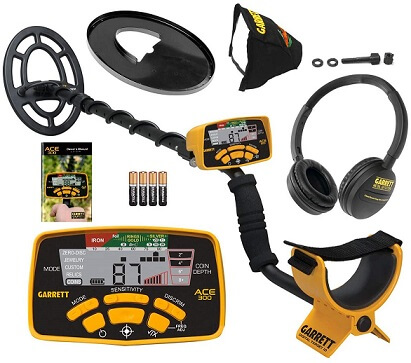
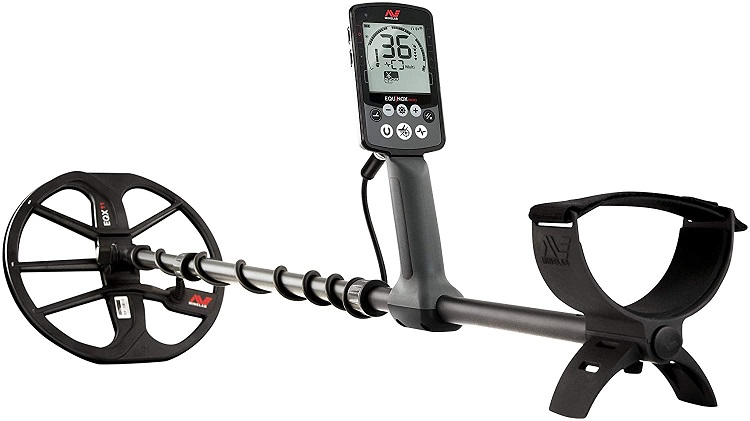
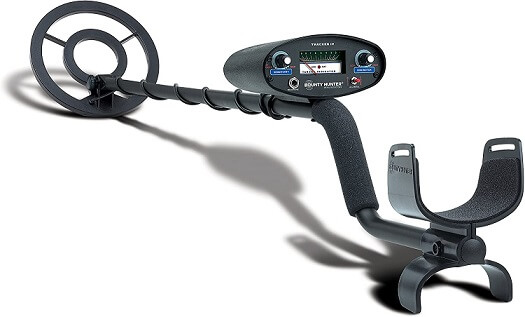
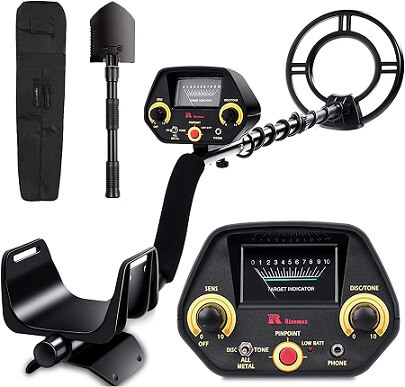
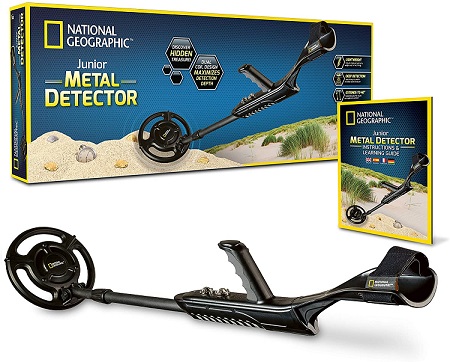
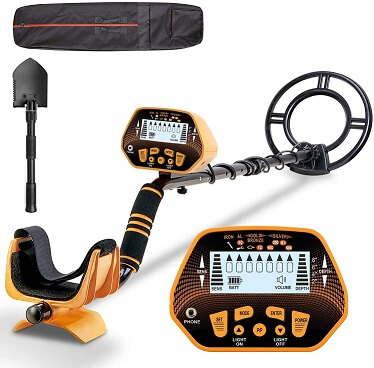
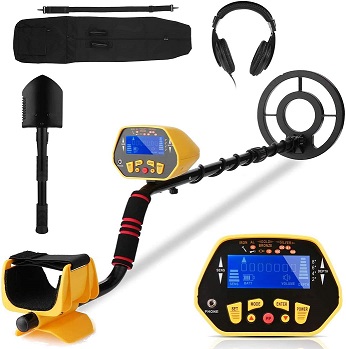
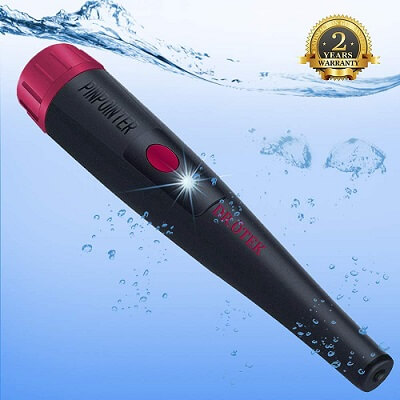
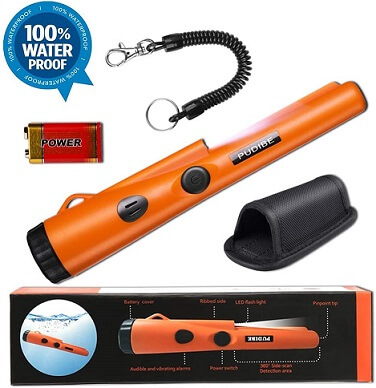


![]()